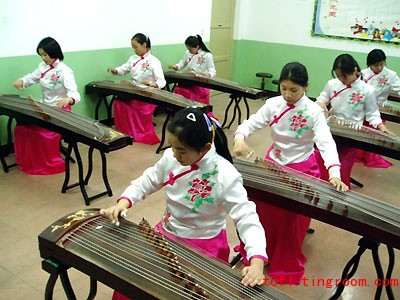- Development
Guzheng became very popular in the imperial court and among the common people. Historical records from ancient books and scholarly writings give vivid accounts of the instrument and its music. Hou Jin, a scholar of the Eastern Han Period (25 A.D. - 220 A.D.) wrote that Guzheng's sound touches the Heavens above and the Gods and spirits below.
By the Tang Dynasty (618 A.D. - 907 A.D.), the number of strings had increased from five to thirteen, and the bamboo had been replaced with wu-tong or paulownia wood for the frame of the instrument. In addition, many new forms of Guzheng appeared through cultural exchanges with Japan, Korea, Mongolia, Vietnam and many other Asian countries.

 English
English Japanese
Japanese Korean
Korean French
French German
German Spanish
Spanish Italian
Italian Arab
Arab Portuguese
Portuguese Vietnamese
Vietnamese Russian
Russian Finnish
Finnish Thai
Thai dk
dk